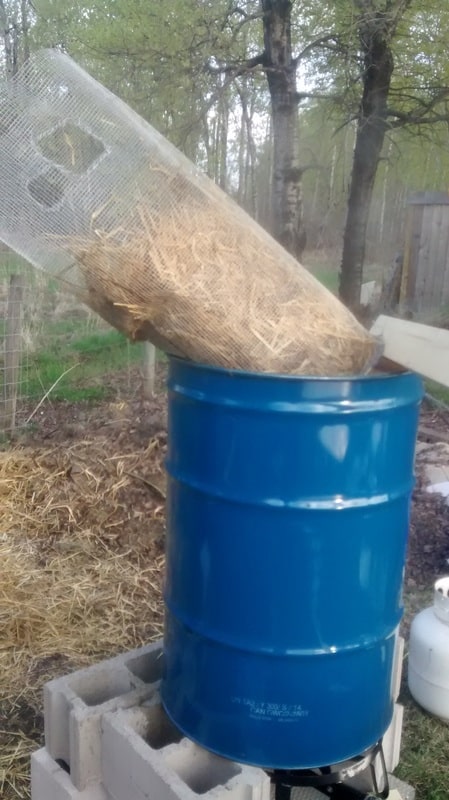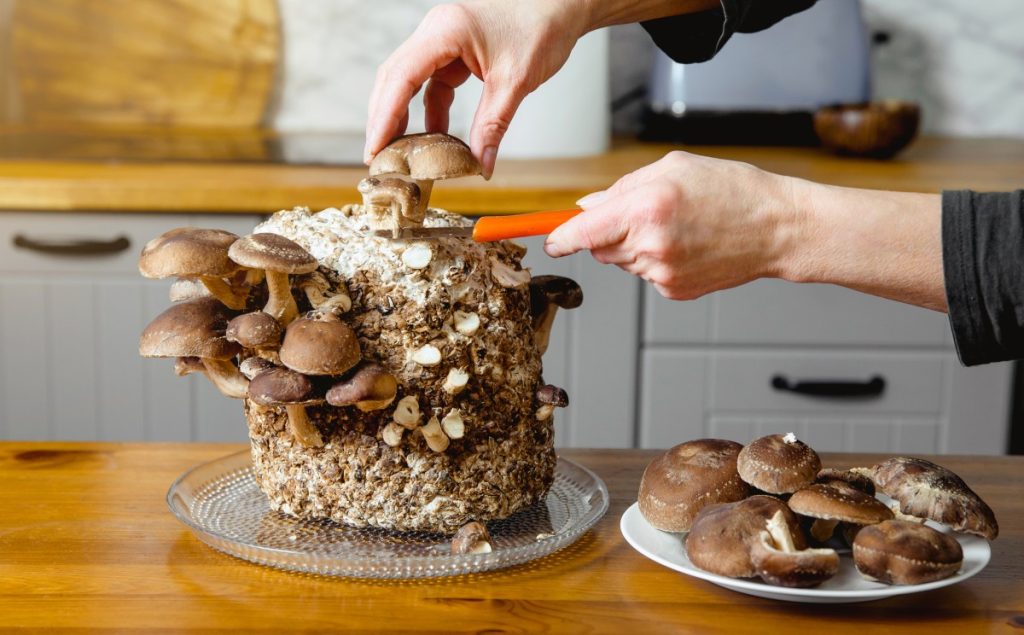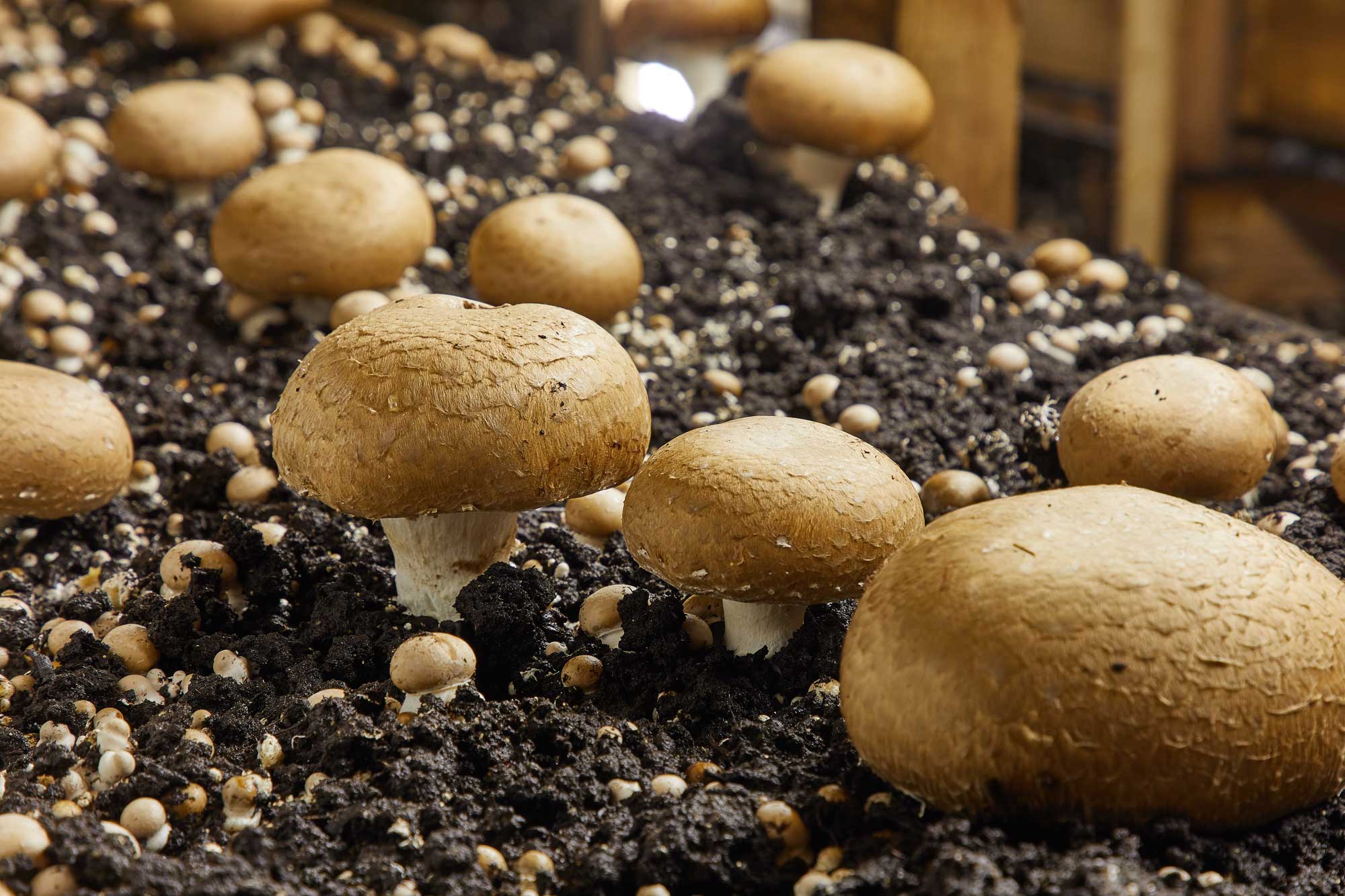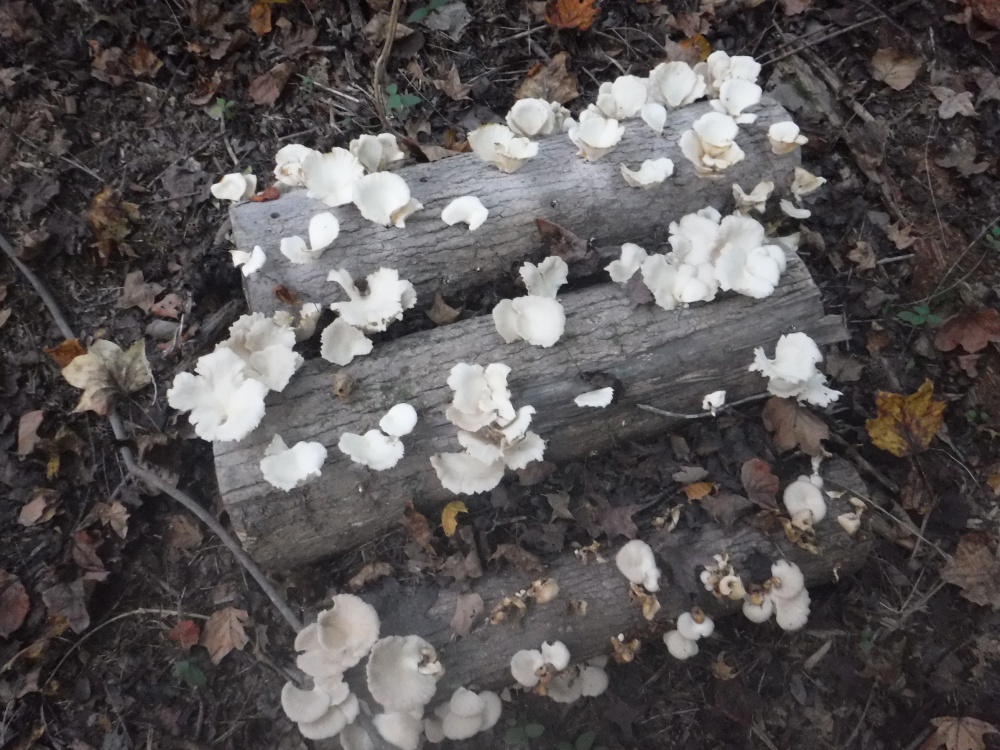Unlocking the Secrets of Fungal Cultivation
Mushroom cultivation has become an increasingly popular hobby and profession in recent years, with many enthusiasts seeking to unlock the secrets of fungal growth. As the demand for fresh, locally grown produce continues to rise, growing mushrooms at home or on a commercial scale can be a rewarding and profitable venture. But what makes mushroom cultivation so appealing, and what are the benefits of growing these fascinating organisms?
One of the primary advantages of mushroom cultivation is the potential for high yields and rapid growth rates. With the right environment and care, some mushroom varieties can produce multiple flushes, providing a continuous harvest over several weeks or even months. Additionally, mushrooms are a nutrient-rich food source, high in protein, fiber, and various essential vitamins and minerals. They also have potential health benefits, including antioxidant and anti-inflammatory properties.
For those new to mushroom cultivation, it’s essential to understand the basics of fungal biology and the factors that influence growth. Fungi are heterotrophic organisms, meaning they obtain their nutrients by decomposing organic matter or forming symbiotic relationships with other organisms. By replicating the natural environment and providing the right conditions, growers can encourage healthy mycelium growth and promote fruiting body formation.
So, what is the best way to grow mushrooms? While there is no single “right” method, a combination of proper substrate selection, climate control, and pest management can significantly improve yields and overall success. By understanding the unique needs of different mushroom varieties and adapting growing techniques accordingly, cultivators can unlock the full potential of their crop and enjoy a bountiful harvest.
Whether you’re a seasoned grower or just starting out, the world of mushroom cultivation offers a wealth of opportunities for innovation and discovery. By embracing the latest techniques and technologies, while also respecting the natural processes that govern fungal growth, you can join the ranks of successful mushroom cultivators and enjoy the many rewards that this fascinating hobby has to offer.
Preparing the Perfect Environment: A Guide to Mushroom Substrates
When it comes to growing mushrooms, the substrate is a critical component of the cultivation process. The substrate provides the necessary nutrients, water, and support for mycelium growth and fruiting body formation. With so many options available, selecting the right substrate can be overwhelming, especially for beginners. In this section, we’ll explore the most common mushroom substrates, including straw, compost, and wood chips, and provide tips on how to prepare them for optimal growth.
Straw is a popular choice for mushroom cultivation due to its high carbon content, low nitrogen levels, and ease of pasteurization. To prepare straw for mushroom growth, it’s essential to pasteurize it to eliminate any contaminants or pests. This can be done by soaking the straw in hot water (around 160°F) for 1-2 hours, followed by a thorough rinsing with cold water. Once pasteurized, the straw can be inoculated with mushroom spores and incubated in a controlled environment.
Compost is another excellent substrate for mushroom growth, offering a nutrient-rich environment that promotes healthy mycelium development. To prepare compost for mushroom cultivation, it’s crucial to ensure that it’s fully broken down and has reached a temperature of at least 131°F to kill off any pathogens. Once the compost has cooled, it can be inoculated with mushroom spores and maintained in a humid, temperature-controlled environment.
Wood chips are a less common substrate for mushroom cultivation, but they can be an excellent choice for certain species, such as oyster and shiitake mushrooms. To prepare wood chips for mushroom growth, it’s essential to sterilize them to eliminate any contaminants or pests. This can be done by autoclaving the wood chips or using a pressure cooker to reach a temperature of at least 240°F. Once sterilized, the wood chips can be inoculated with mushroom spores and incubated in a controlled environment.
In addition to selecting the right substrate, it’s also essential to maintain optimal moisture levels, pH, and nutrient availability. By providing the right environment and care, mushroom growers can promote healthy mycelium growth, increase yields, and enjoy a bountiful harvest. Whether you’re a seasoned grower or just starting out, understanding the importance of substrate selection and preparation is crucial for achieving success in mushroom cultivation.
By following these tips and guidelines, you can create an ideal environment for your mushrooms to thrive, and take the first step towards mastering the art of mushroom growth. Remember, the best way to grow mushrooms is to provide the right conditions, care, and attention, and with practice and patience, you can enjoy a rewarding and profitable mushroom cultivation experience.
How to Create a Mushroom-Friendly Climate
Mushroom cultivation requires a specific set of environmental conditions to thrive. Temperature, humidity, and light levels all play a critical role in promoting healthy mycelium growth and fruiting body formation. In this section, we’ll explore the importance of maintaining optimal climate conditions and provide tips on how to create a mushroom-friendly environment.
Temperature is one of the most critical factors in mushroom cultivation. Different species have unique temperature requirements, but most mushrooms prefer temperatures between 55°F and 65°F (13°C and 18°C). To maintain optimal temperature levels, growers can use climate control systems, such as thermostats and heating/cooling mats, to regulate the environment. Greenhouses and grow tents can also provide a stable temperature environment, while also controlling humidity and light levels.
Humidity is another essential factor in mushroom cultivation. Most mushrooms prefer a humid environment, with relative humidity levels between 70% and 90%. To maintain optimal humidity levels, growers can use humidifiers, misting systems, or cover the growing area with a damp cloth. It’s also essential to ensure good air circulation to prevent the buildup of CO2 and maintain healthy mycelium growth.
Light levels also play a critical role in mushroom cultivation. While some species can tolerate direct sunlight, most mushrooms prefer low to moderate light levels. To provide optimal light conditions, growers can use LED grow lights, fluorescent lights, or natural light filtered through a shade cloth. It’s also essential to maintain a consistent light schedule to promote healthy mycelium growth and fruiting body formation.
In addition to maintaining optimal temperature, humidity, and light levels, growers should also consider the importance of air exchange and circulation. Good air circulation helps to prevent the buildup of CO2, maintain healthy mycelium growth, and promote fruiting body formation. To ensure good air circulation, growers can use fans, vents, or air exchange systems to maintain a consistent flow of fresh air.
By creating a mushroom-friendly climate, growers can promote healthy mycelium growth, increase yields, and enjoy a bountiful harvest. Whether you’re a seasoned grower or just starting out, understanding the importance of climate control is crucial for achieving success in mushroom cultivation. By following these tips and guidelines, you can create an ideal environment for your mushrooms to thrive, and take the first step towards mastering the art of mushroom growth.
Remember, the best way to grow mushrooms is to provide the right conditions, care, and attention. By maintaining optimal climate conditions, growers can promote healthy mycelium growth, increase yields, and enjoy a rewarding and profitable mushroom cultivation experience.
Choosing the Right Mushroom Variety: A Guide to Popular Species
With over 14,000 known species of mushrooms, choosing the right variety can be a daunting task, especially for beginners. Different species have unique characteristics, growth habits, and challenges, making it essential to select a variety that suits your needs and experience level. In this section, we’ll introduce popular mushroom varieties, including oyster, shiitake, and button mushrooms, and provide guidance on how to choose the best variety for your mushroom cultivation journey.
Oyster mushrooms (Pleurotus ostreatus) are a popular choice for beginners due to their ease of cultivation and fast growth rate. They can thrive on a wide range of substrates, including straw, compost, and wood chips, and can produce multiple flushes. Oyster mushrooms are also relatively pest- and disease-free, making them an excellent choice for those new to mushroom cultivation.
Shiitake mushrooms (Lentinula edodes) are a popular variety for their rich, smoky flavor and potential health benefits. They are native to East Asia and typically grow on deciduous trees, but can also be cultivated on sawdust or wood chips. Shiitake mushrooms require a more controlled environment than oyster mushrooms, with specific temperature and humidity requirements, but can produce high yields and are relatively disease-free.
Button mushrooms (Agaricus bisporus) are one of the most widely cultivated and consumed mushroom varieties worldwide. They are relatively easy to grow and can thrive on a range of substrates, including compost and manure. Button mushrooms are also relatively pest- and disease-free, making them an excellent choice for commercial growers. However, they can be more sensitive to temperature and humidity fluctuations than other varieties.
When choosing a mushroom variety, it’s essential to consider factors such as climate, substrate, and desired yield. Different species have unique requirements, and selecting the right variety can make a significant difference in the success of your mushroom cultivation journey. By understanding the characteristics and challenges associated with each variety, you can make informed decisions and choose the best variety for your needs.
By selecting the right mushroom variety and providing the right conditions, care, and attention, you can enjoy a bountiful harvest and take the first step towards mastering the art of mushroom growth. Remember, the best way to grow mushrooms is to provide the right conditions, care, and attention, and with practice and patience, you can achieve success in mushroom cultivation.
Maintaining a Healthy Mushroom Crop: Pest and Disease Management
Mushroom cultivation can be a rewarding and profitable venture, but it requires careful attention to pest and disease management. Common pests and diseases can quickly decimate a mushroom crop, resulting in reduced yields and lower quality mushrooms. In this section, we’ll discuss common pests and diseases that can affect mushroom crops and provide tips on how to prevent and manage these issues.
Spider mites are a common pest that can affect mushroom crops, particularly in warm and dry environments. These tiny arachnids feed on the sap of the mushroom, causing damage to the mycelium and reducing yields. To prevent spider mite infestations, growers can use neem oil or insecticidal soap, and maintain a humid environment with good air circulation.
Fungus gnats are another common pest that can affect mushroom crops, particularly in moist environments. These tiny insects lay their eggs in the substrate, and the larvae feed on the mycelium, causing damage and reducing yields. To prevent fungus gnat infestations, growers can use yellow sticky traps or insecticidal soap, and maintain good air circulation and a dry environment.
Fungal infections are a common disease that can affect mushroom crops, particularly in humid environments. These infections can cause damage to the mycelium and reduce yields, and can be spread through contaminated substrate or equipment. To prevent fungal infections, growers can use sterilized equipment and substrate, and maintain good air circulation and a dry environment.
Integrated pest management (IPM) is a holistic approach to managing pests and diseases in mushroom cultivation. IPM involves using a combination of techniques, including cultural controls, biological controls, and chemical controls, to prevent and manage pest and disease issues. By using IPM, growers can reduce their reliance on chemical pesticides and maintain a healthy and sustainable mushroom crop.
Organic pest control methods are also effective in managing pest and disease issues in mushroom cultivation. These methods include using neem oil, insecticidal soap, and diatomaceous earth to control pests, and using copper-based fungicides to control fungal infections. By using organic pest control methods, growers can maintain a healthy and sustainable mushroom crop, and reduce their environmental impact.
By understanding the common pests and diseases that can affect mushroom crops, and using effective prevention and management techniques, growers can maintain a healthy and productive mushroom crop. Remember, the best way to grow mushrooms is to provide the right conditions, care, and attention, and with practice and patience, you can achieve success in mushroom cultivation.
Harvesting and Enjoying Your Homegrown Mushrooms
Harvesting your homegrown mushrooms is an exciting moment, and with the right techniques, you can enjoy a bountiful and delicious crop. In this section, we’ll provide guidance on how to properly harvest and handle your mushrooms to ensure optimal flavor and texture.
The timing of the harvest is crucial, as it can affect the quality and flavor of the mushrooms. Most mushroom varieties are ready to harvest when the caps are fully open and the stems are tender. To harvest, simply twist the mushroom gently to avoid damaging the mycelium or the surrounding substrate.
After harvesting, it’s essential to handle the mushrooms carefully to prevent damage and spoilage. Mushrooms are delicate and can be easily bruised, so it’s best to handle them gently and store them in a cool, dry place. You can store your harvested mushrooms in a paper bag or a breathable container to maintain humidity and keep them fresh.
Cooking with homegrown mushrooms is a treat, and there are countless ways to enjoy them. You can sauté them with garlic and herbs, add them to soups and stews, or use them as a topping for salads and pizzas. The possibilities are endless, and with a little creativity, you can create delicious and memorable dishes with your homegrown mushrooms.
Some popular recipe ideas for homegrown mushrooms include:
- Mushroom risotto: Sauté sliced mushrooms with garlic and onions, then add Arborio rice and cook until tender. Finish with white wine and grated Parmesan cheese.
- Mushroom stir-fry: Stir-fry sliced mushrooms with your favorite vegetables, such as bell peppers and broccoli, and serve over rice or noodles.
- Mushroom soup: Simmer sliced mushrooms with vegetables and aromatics, then puree until smooth. Serve with a swirl of cream and a sprinkle of herbs.
By following these tips and guidelines, you can enjoy a bountiful and delicious crop of homegrown mushrooms. Remember, the best way to grow mushrooms is to provide the right conditions, care, and attention, and with practice and patience, you can achieve success in mushroom cultivation.
Troubleshooting Common Issues in Mushroom Cultivation
Mushroom cultivation can be a rewarding and profitable venture, but it’s not without its challenges. Common issues such as contamination, poor growth, and low yields can be frustrating and costly. In this section, we’ll address common challenges and issues that may arise during mushroom cultivation and provide troubleshooting tips and advice on how to overcome these obstacles.
Contamination is a common issue in mushroom cultivation, and it can be caused by a variety of factors, including poor sanitation, inadequate sterilization, and exposure to pests and diseases. To prevent contamination, it’s essential to maintain a clean and sterile environment, use proper sterilization techniques, and monitor your crops regularly for signs of contamination.
Poor growth is another common issue in mushroom cultivation, and it can be caused by a variety of factors, including inadequate nutrition, poor temperature and humidity control, and insufficient light. To promote healthy growth, it’s essential to provide your mushrooms with the right conditions, including adequate nutrition, optimal temperature and humidity, and sufficient light.
Low yields are a common issue in mushroom cultivation, and they can be caused by a variety of factors, including poor substrate quality, inadequate moisture, and insufficient light. To increase yields, it’s essential to use high-quality substrates, maintain optimal moisture levels, and provide sufficient light.
Troubleshooting common issues in mushroom cultivation requires a combination of knowledge, experience, and patience. By understanding the common challenges and issues that may arise during mushroom cultivation, you can take steps to prevent them and ensure a successful and profitable harvest.
Some common troubleshooting tips for mushroom cultivation include:
- Monitoring your crops regularly for signs of contamination, poor growth, and low yields.
- Maintaining a clean and sterile environment to prevent contamination.
- Providing your mushrooms with the right conditions, including adequate nutrition, optimal temperature and humidity, and sufficient light.
- Using high-quality substrates to promote healthy growth and increase yields.
By following these tips and guidelines, you can overcome common challenges and issues in mushroom cultivation and achieve success in this rewarding and profitable venture. Remember, the best way to grow mushrooms is to provide the right conditions, care, and attention, and with practice and patience, you can achieve success in mushroom cultivation.
Scaling Up Your Mushroom Operation: Tips for Commercial Growers
As a mushroom cultivator, you may be looking to take your operation to the next level and start selling your mushrooms commercially. Scaling up your mushroom operation requires careful planning, attention to detail, and a commitment to quality. In this section, we’ll provide guidance on how to scale up your production, manage larger crops, and navigate the commercial mushroom market.
One of the most important considerations when scaling up your mushroom operation is ensuring that you have a consistent and reliable supply of high-quality substrate. This may involve investing in a larger substrate preparation area, purchasing a substrate pasteurizer or sterilizer, and implementing a quality control program to ensure that your substrate meets the highest standards.
Another key consideration is managing larger crops. This may involve investing in a larger growing area, purchasing additional climate control equipment, and implementing a crop management system to ensure that your mushrooms are harvested at the optimal time. It’s also essential to have a plan in place for handling and storing your mushrooms after harvest to ensure that they remain fresh and of high quality.
Navigating the commercial mushroom market can be challenging, but with the right strategy and planning, you can succeed. It’s essential to research your competition, understand your target market, and develop a marketing plan that highlights the unique qualities of your mushrooms. You may also want to consider obtaining certifications such as organic or specialty mushroom certifications to differentiate your product and increase its value.
Some tips for scaling up your mushroom operation include:
- Investing in high-quality equipment and substrate to ensure consistency and reliability.
- Implementing a quality control program to ensure that your substrate and mushrooms meet the highest standards.
- Developing a crop management system to ensure that your mushrooms are harvested at the optimal time.
- Researching your competition and understanding your target market to develop an effective marketing strategy.
By following these tips and guidelines, you can successfully scale up your mushroom operation and start selling your mushrooms commercially. Remember, the best way to grow mushrooms is to provide the right conditions, care, and attention, and with practice and patience, you can achieve success in mushroom cultivation.









